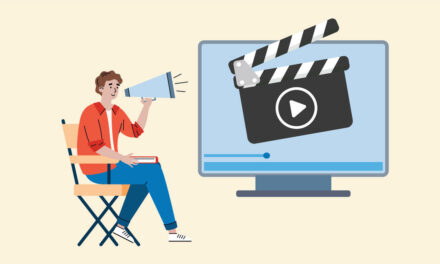In 1927, Warner Bros. was a fledgling movie production business that spotted an opportunity: Audio. It was the first studio to produce and release a commercial feature film, The Jazz Singer, with synchronized audio including dialogue. Referred to as the first “Talkie,” the movie used Vitaphone sound-on-disc technology to reproduce the musical score and sporadic episodes of synchronized speech. Many in the industry could not believe that silent movies would be replaced and become obsolete. They referred to “Talkie’s” as a fad. But it happened–this Oscar-winning moment and evolution in storytelling transformed an industry and ended the silent film era.
This new, innovative technology caught on because Warner Bros. challenged the status quo of movie making to change the whole industry. All it took was a little bravery, investment in technology, and a relentless focus on the customer and what they want –much like the approach Netflix and Amazon take today.
The rest, as they say, is history. The financial success of The Jazz Singer and The Singing Fool enabled Warner Bros. to purchase a majority interest in First National and move their productions into a Burbank lot to ramp up their movie production efforts. Today, the company is considered one of the “Big Six” major American film studios producing films such as Justice League.
Talkies helped secure Hollywood’s position as one of the world’s most powerful cultural/commercial centers of influence, and also transformed movies around the world from Japan to Europe, to enable more dramatic, immersive, expressive, colorful, and musical storytelling.
Today, our mobile world is made three dimensional through audio.
Think of the following; the distinct Intel audio branding, the eBay notification noise, or the immersion possible via your favorite artist or author via music, audiobooks, and podcasts. Would you enjoy your Netflix or Prime Video content if it was silent? Audio is often overlooked by branding agencies but is a key aspect of the digital experience.
The Branding Power of the Podcast
A great mobile audio content opportunity for 2018, is the small yet mighty Podcast. Podcasts are one of the key of-the-moment content formats consistently rising in popularity particularly among millennials. According to Apple, there are more than 500,000 active podcasts, with content in more than 100 languages. Podcast listeners are educated, affluent, loyal, and are more likely to be active on social media with brands. People often listen to them at home, in the car, on the move or while exercising.
The 2014 breakout hit Serial set records in the podcasting world thanks to its compelling content. It was downloaded more than 10 million times in the first four days of its release—episodes of the first two seasons of “Serial” have been downloaded more than 250 million times, according to Serial Productions. Unlike broadcast TV shows built around advertising, Serial episodes vary in length, to aid the story. One of the reasons for the success of the likes of Serial is that it teleported you to a new world and into a well-told audio-only story. In this always-on world, the subject matter meant it needed your near undivided attention, so in fact, it takes you away from screens for a brief respite.
Audio on Social Media Platforms is Another Interesting Paradigm
Facebook is a powerhouse in terms of video consumption with over 8 billion video views per day. Surprisingly as little as 15% of videos on Facebook are watched with sound. This means that the visual aspect, and subtitling of videos, is more important on this channel than anywhere else. It’s important to be able to capture user attention without sound.
What is clear is that video is increasingly watched on mobile devices. On Twitter, 90% of video views are mobile. On YouTube, over 50% of video views are mobile, with the average viewing session on mobile now over 1 hour in duration. Here the power of audio is key in capturing the viewer’s attention and keeping them engaged. Interestingly, the AI recommendation algorithm now drives 70% of all views on YouTube. People use their mobile to save time or kill time. Video viewing can help you become more educated, informed, or help solve a problem–or just let you escape and be entertained.
The power of video online is that of a story well told and the benefits for brands are compelling. Viewers retain 95% of a message when they watch it in a video, compared to 10% when reading it in text. And according to Moz, blog posts incorporating video attract 3x as many inbound links as blog posts without video.
Mobile is at the core of our human experience, and consideration for audio is a compelling dynamic that can elevate your brand and your content into greatness.






